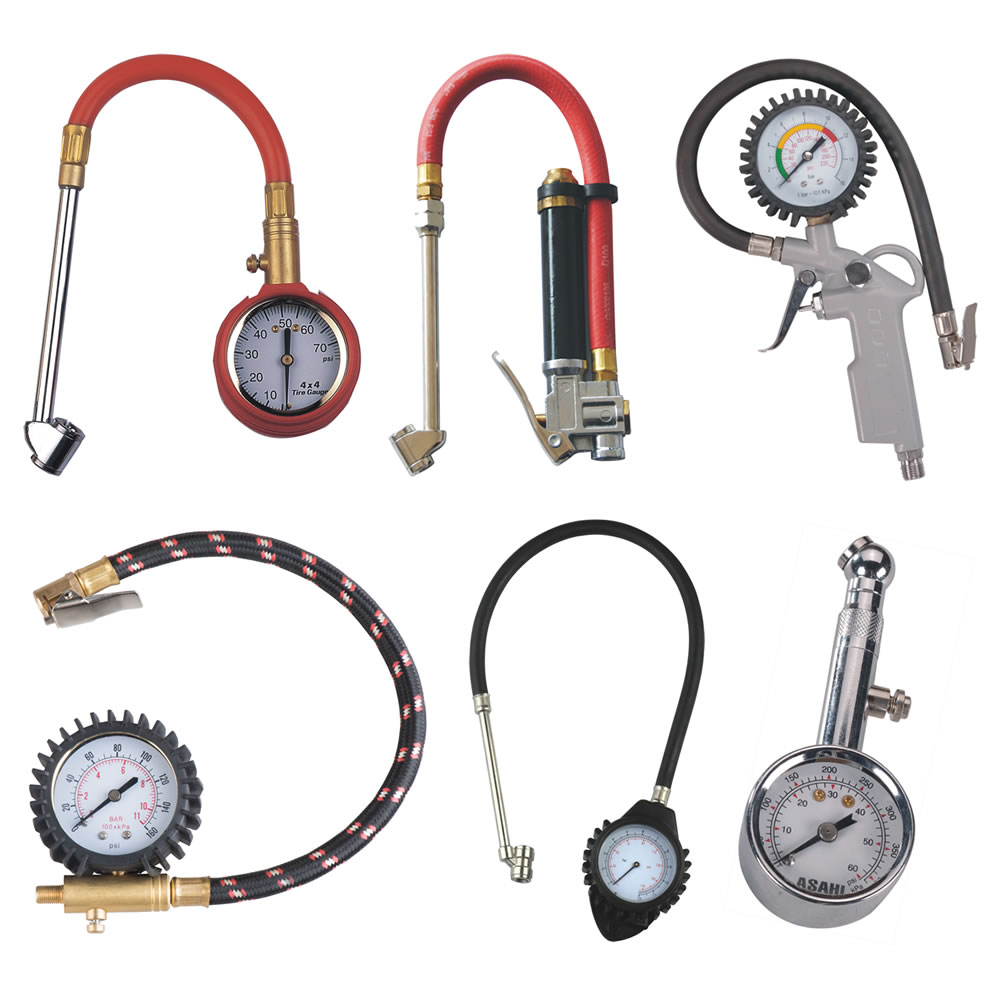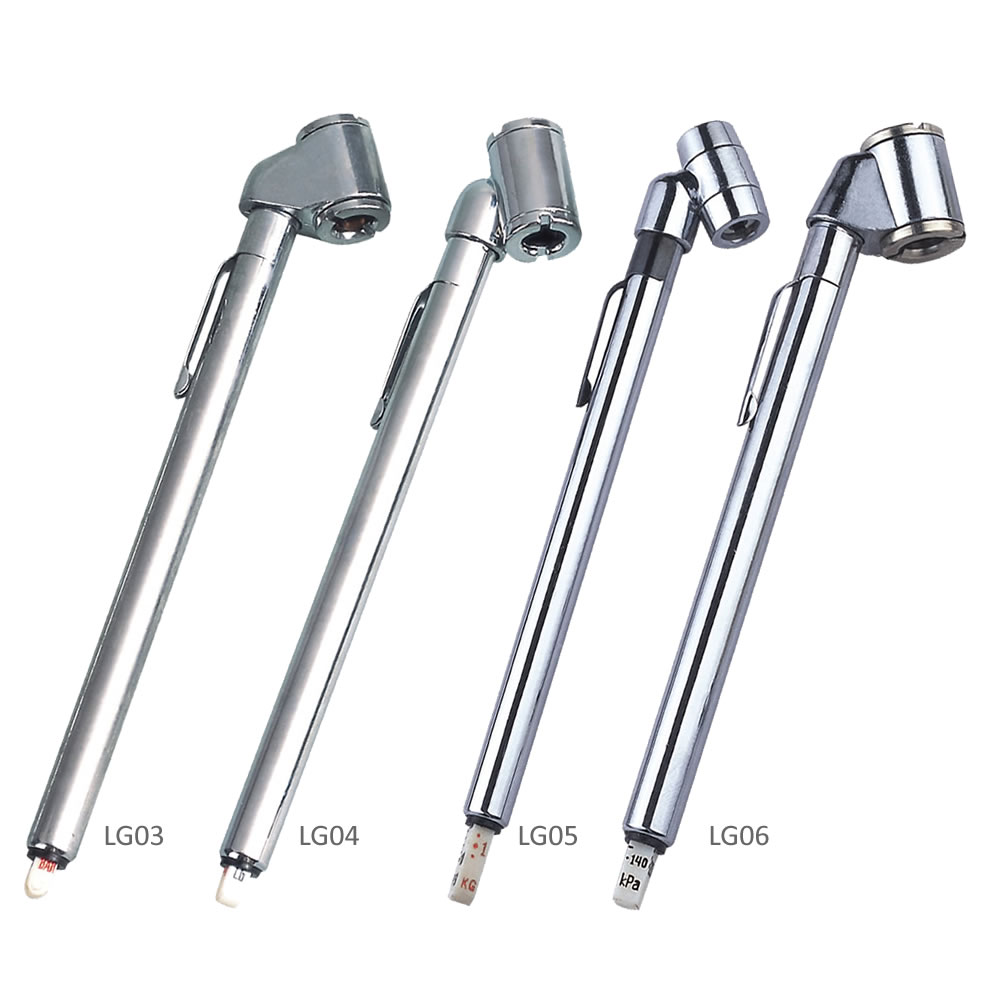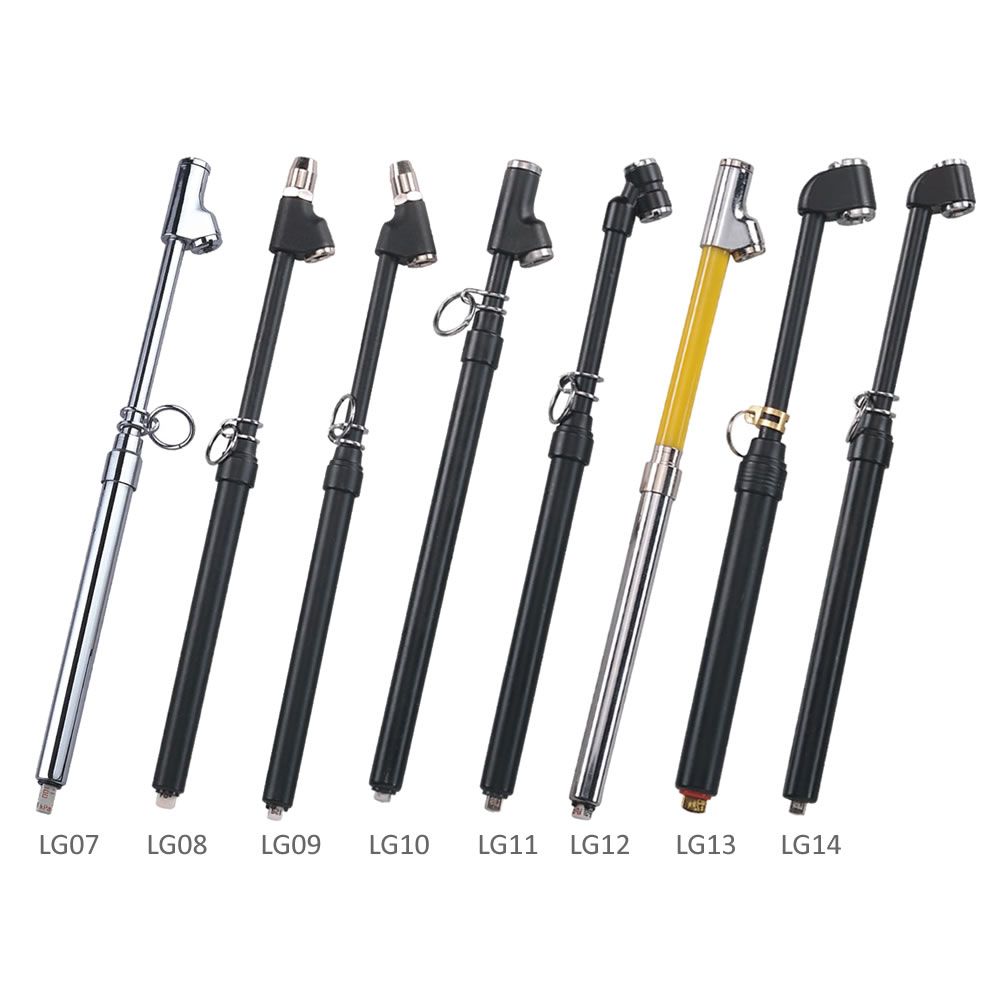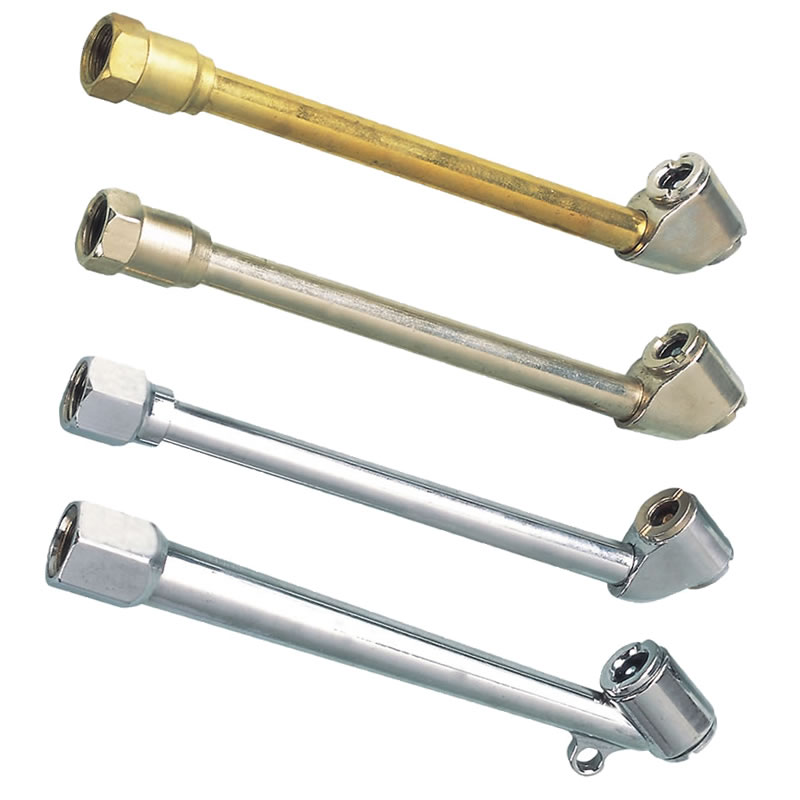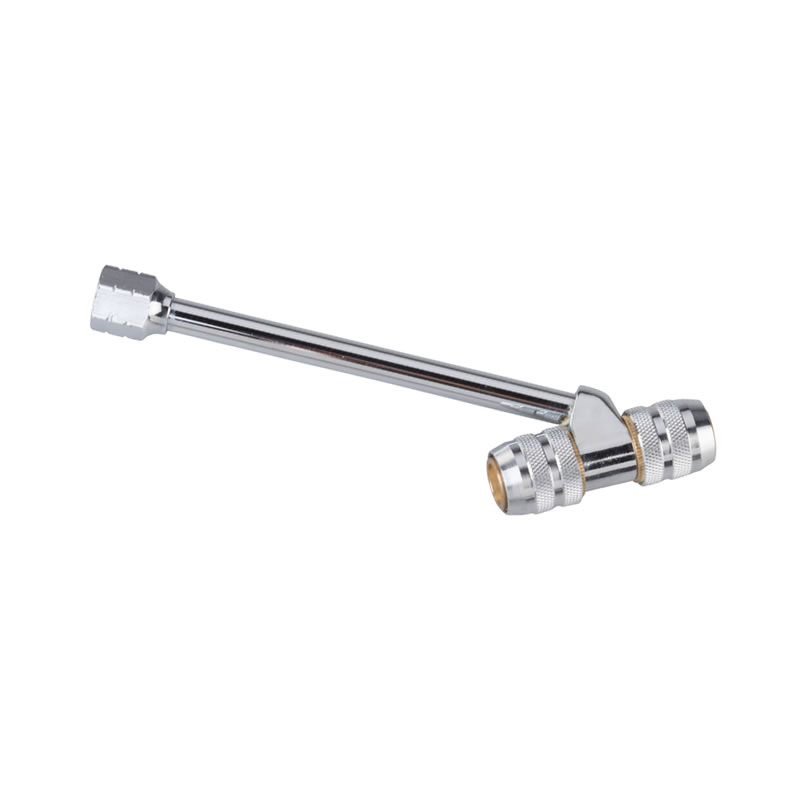Tire Pressure Gauges
What is a Tyre Pressure Gauge?
Tire gauges are an essential tool that's used for checking tire pressure. Once you find the gauge type that you like best, try to use it at least once a month to ensure proper inflation as part of your regular vehicle maintenance.
The gauge provides a unit measurement (PSI) to help drivers understand whether the tyres are under-inflated, over-inflated or just right.
PSI, pounds per square inch, is the measurement tyre pressure is recorded in. This number is used to interpret the pressure of the tyre.
PSI is a commonly used scale for pressure measurement, however alternative scales are also used and are sometimes in owners' manuals, user guides and on pressure gauges themselves.
Driving on properly inflated tires improves the safety, handling, and fuel economy of your vehicle.
What we offer
Tire Pressure must checked regularly. Maintaining proper tire inflation will increase fuel economy, increase tire life, and reduce the chance of tire failure.
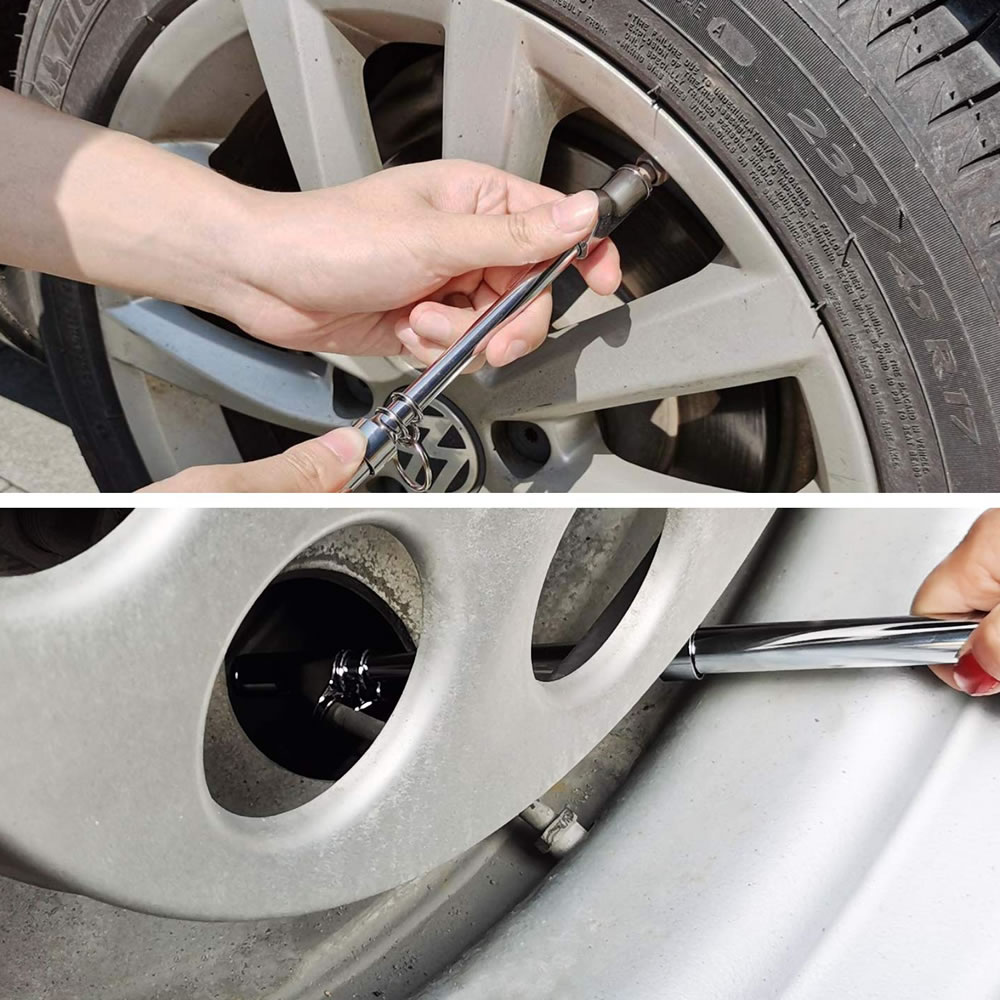
Pencil Type Tire Gauges
MINI Type Tire Gauges
ECONOMY Tire Gauges
PASSIONAL Tire Gauges
TRU-FLATE Tire Gauges
DUAL-HEAD Tire Gauges
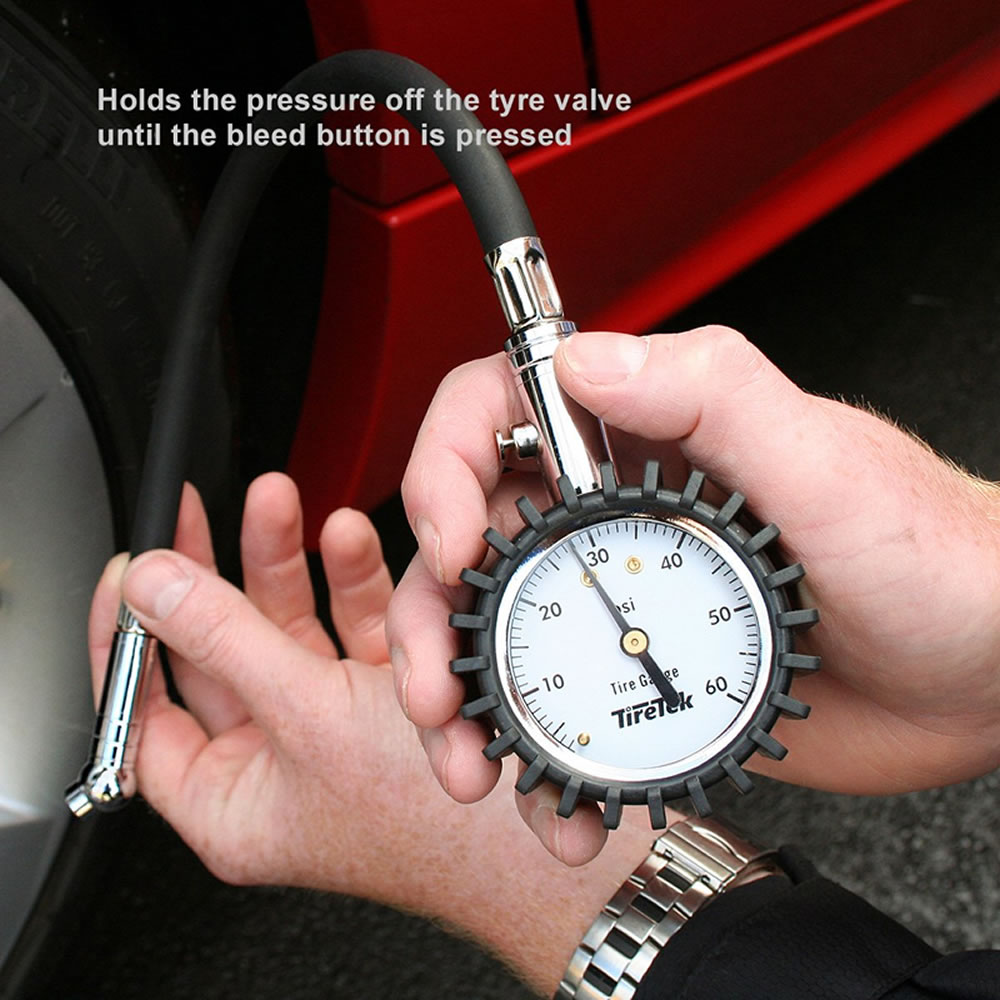
Dial Type Tire Gauges
Dial Type Gauges with Bleeder Valves
Dial Type Gauges without Bleeder Valves
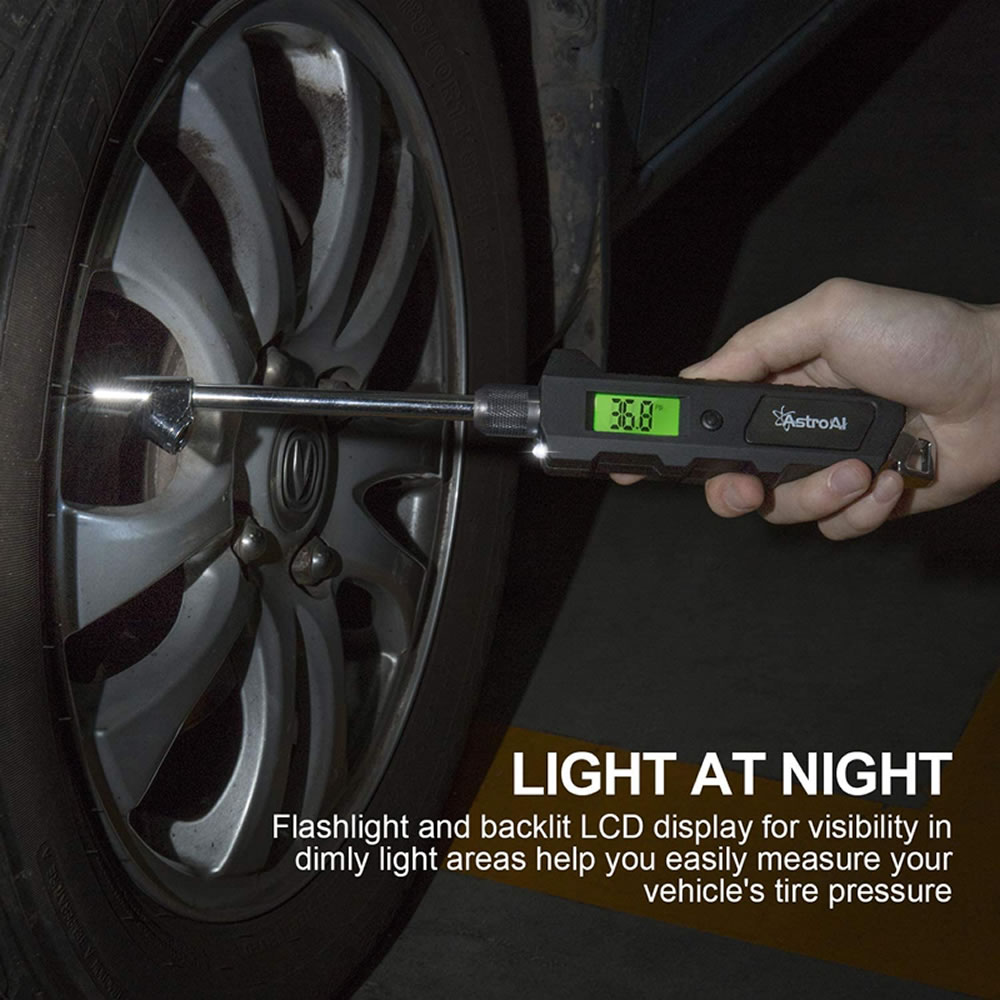
Digital Tire Gauges
How To Use Tire Gauges
If you've got a car, you probably own one of those tire pressure gauge is a simple sensor device that gives reading on the amount of air or pressure within the tires. Newer car models have a built-in tire pressure gauge known as the Tire Pressure Monitoring System (TPMS) that additionally alerts the driver if their tires are under or over-inflated.
When it comes to attesting car performance, tires are just as important as the engine. In particular, the way you drive significantly affect your tire's life. You slammed them on speed bumps and potholes. You brake at the last minute. You haul a lot of stuff into the vehicle. You might be torturing your tires more than you know it. And not to mention the seasonal temperature changes that affect the pressure within them. For these reasons that we need to check on our tires regularly.
Find out which tire pressure gauge is right for you with Longwei.
Are you looking for the most accurate tire gauge? The least expensive? The one that can be stored easiest? There are three different kinds of tire pressure gauges to choose from. With this list of pros and cons, you can find the right tire pressure gauge.
Which type of tire gauge is a good fit for you?
The Pencil/Stick Tire Pressure Gauge Application
A pencil tire pressure gauge is a type of analog tire gauge. It’s also known as a stick tire pressure gauge. The key components are a metal outer shell, an inner plastic measuring rod and the stem attachment. The inner plastic rod will extend when air pressure is applied. On the plastic insert, you’ll find large and small numbers. This gives you the PSI reading for your tire. For example, if you see a large three and a small nine, the reading is 39 PSI.
Tire Pressure Gauge Guide
Pros:
Compact size, which makes it easy to keep in your car
Least expensive when compared to dial and digital gauges
Cons:
Least accurate of the three types of gauges
Wear and tear can decrease accuracy

How it works:
Resembling a metal pocket pen, a stick gauge contains a rod that slides out when the valve end is pressed against the tire valve stem.
To operate a stick gauge, take the cap off your tire valve and the open end (not the side that releases air) of the stick gauge valve and press firmly. The white stem will begin to push out the other end and indicate a number, typically between 20 and 40 PSI. Be sure to wait until the gauge stops moving to get your reading.
Pros: Stick gauges are easy to use, inexpensive, do not requires batteries, and are small enough to fit into the glove compartment of your vehicle.
Cons: To the untrained eye, a stick gauge can be tricky to read and can be less accurate than the other types of gauges.
The Dial Tire Gauge Application
A dial tire pressure gauge is an analog pressure gauge with a dial instead of a measuring stick. To use a dial gauge, attach the gauge directly to the valve stem. Some dial gauges come equipped with an extension hose. If that’s the case, attach the extension hose to the valve stem. The air pressure will go through the hose. This will cause the needle to move on the dial face. The needle will give you an accurate PSI reading for your tires.
Pros:
Easy to use while inflating the tire
More accurate than a stick gauge
The dial is simple to read
Dependable
Cons:
Less durable—the face of the dial can easily break if made of glass
Calibrated spring can be sensitive to a lot of motion
Less portable
Dials with extension hoses require two hands
Can be more expensive than digital and stick gauges if extension hoses are added to the dial
Bulky when compared to stick and digital gauges

How it works:
Also known as an analog gauge, a dial gauge has a round, clock-like face.
To read tire pressure with a dial gauge, remove the tire valve cap, apply the valve end of the gauge, and wait until the needle on the face stops moving.
Pros: Easy to read, a dial gauge tends to be more accurate than a stick gauge and does not require a battery to operate.
Cons: Larger and more expensive than a stick gauge, a dial gauge takes up more space and usually requires storage in a trunk or garage. You'll also need to use both your hands to operate a dial gauge with an extension hose.
The Digital Tire Gauge Application
To use a digital tire pressure gauge, attach it directly to the valve stem. A digital number will appear on the screen. This is the PSI reading. This gauge is very easy to read. If the digital gauge doesn’t have enough battery power, your readings will be inaccurate. If you choose to use a digital gauge, we suggest you keep extra batteries in your car in case of an emergency.
Pros:
Most accurate, because it reads the pressure in precise digital measurements
Less expensive than some dial gauges
Can come equipped with back-lit screens and LED flashlights
Some can be programmed to remember the desired pressure for your car’s front and back tires
Cons:
Usually more expensive than a stick gauge
Less dependable than analog gauges–requires batteries to work
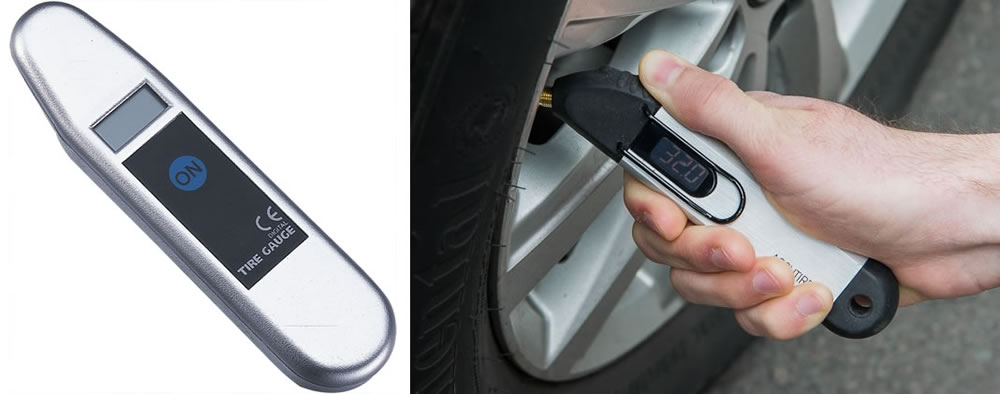
How it works:
Resembling a glue gun with a digital LCD display, a digital gauge provides a readout of your tire pressure when the head is pressed into the tire valve.
Pros: Easy to use, digital gauges offer accurate readings and are typically less expensive than dial gauges. They also tend to resist wear. Some models have backlit screens so you can see your readings in the dark.
Cons: Digital gauges require batteries, which will need to occasional replacement to ensure a proper reading. Digital gauges are also a little more expensive than stick gauges.
Have you ever wondered how it measures the pressure?
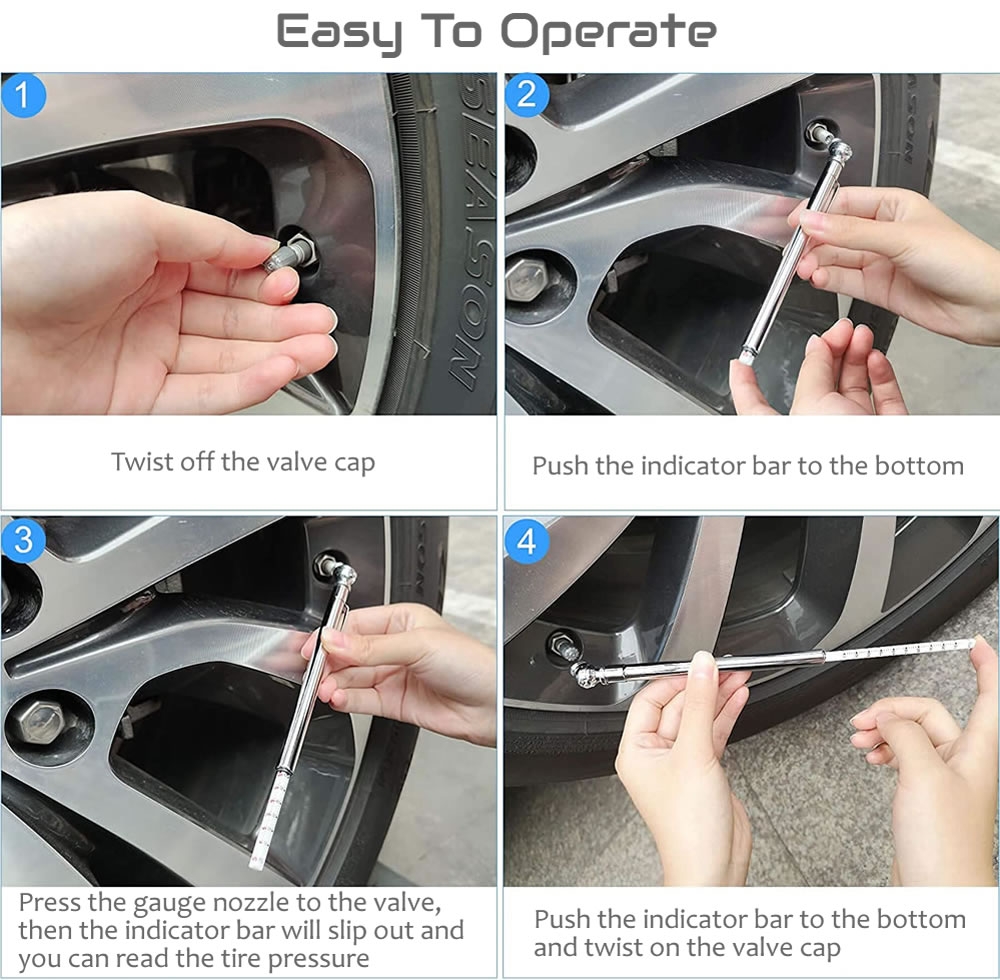
Regardless of the types, using a tire pressure gauge is relatively easy. It only involves a few basic steps which consist of the following.
1. Take the cap of the tire valve. To do this you need to unscrew the valve stem or the black extension near the hubcap disk on the wheels.
2. Attach the gauge. As to how to connect the instrument to the tire may slightly vary depending on what type of gauge you are using. For dial gauge, attach the valve end of the over the valve press system. If its a stick gauge, you need to take the open end of the stick gauge first before you can attach it to the tire's valve.
3. Press the gauge against the tire nozzle. Do make sure no hissing sound is heard. Otherwise, this translates to air pressure escaping which could result in an inaccurate reading.
4. Wait for the reading. If you are using an analog dial gauge, you need to wait until the pointer or needle stops to a certain number, much like a compass. Some models of digital gauge have a button you need to press in order for the gauge to give the reading. On the other hand, metered stick gauges should give you an automatic reading.
5. Replace the valve cap. The valve stem cap has a rubber seal designed to trap dirt and moisture away from the valve stem core that holds the air for your tires. Without the valve cap, air pressure escapes out of your tire and you’ll end up with a flat tire.
And that, ladies and gentlemen, is how you use a pressure gauge. Make sure to repeat the process on the other tires. If the reading is not in accordance with the manufacturer's PSI then you need to inflate or adjust the air as needed. Remember both under and over-inflate car compromised tire performance so you need to make sure that your tire is properly inflated



